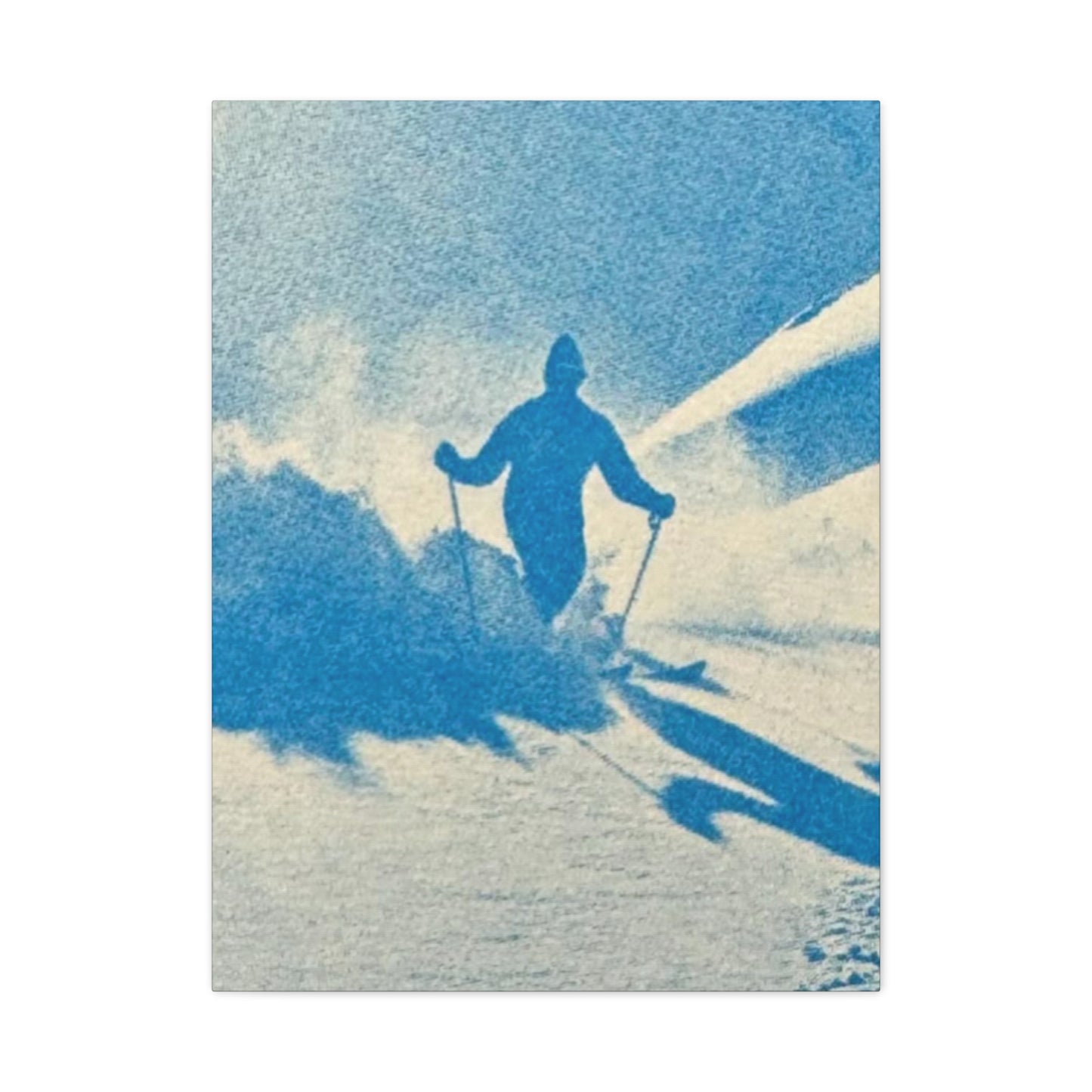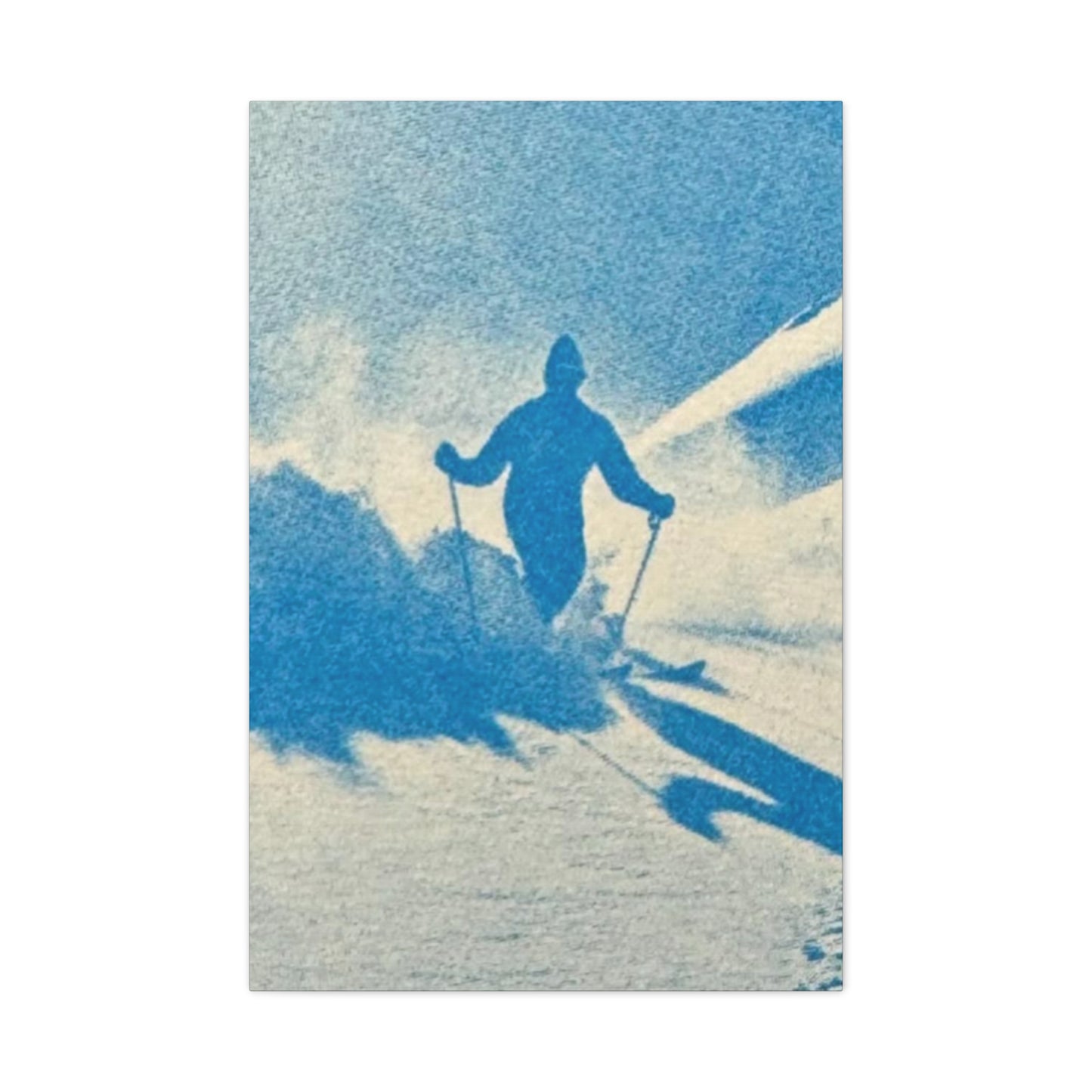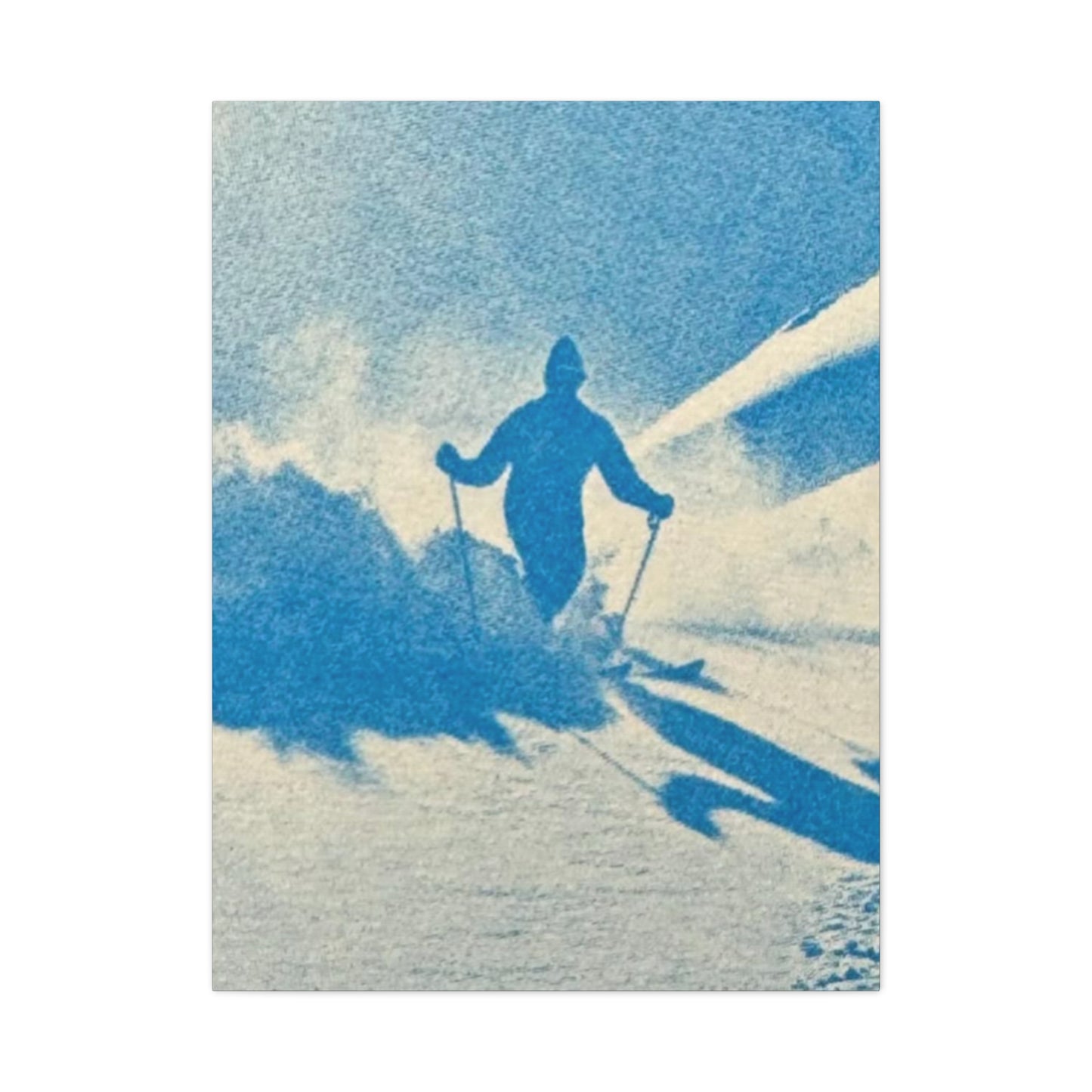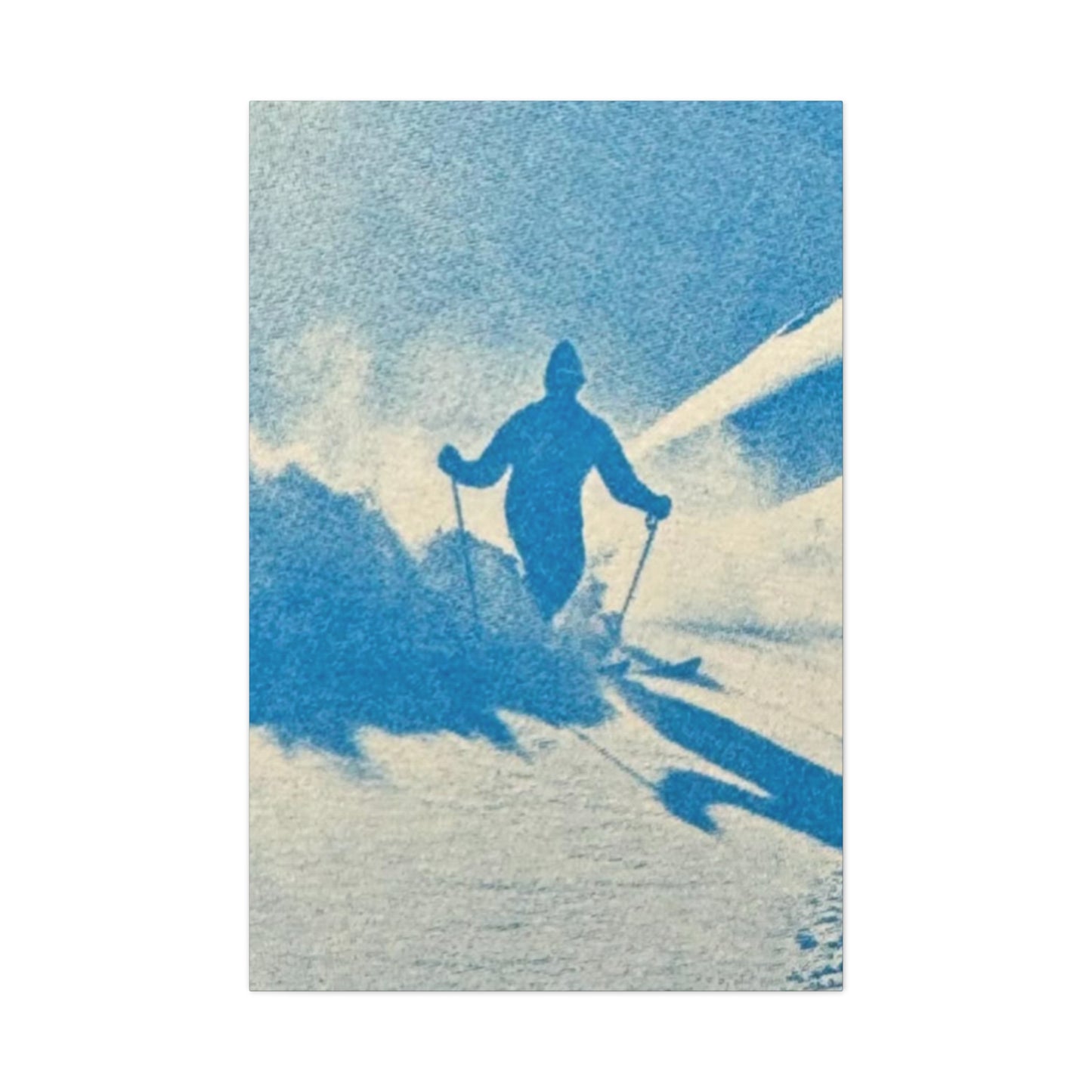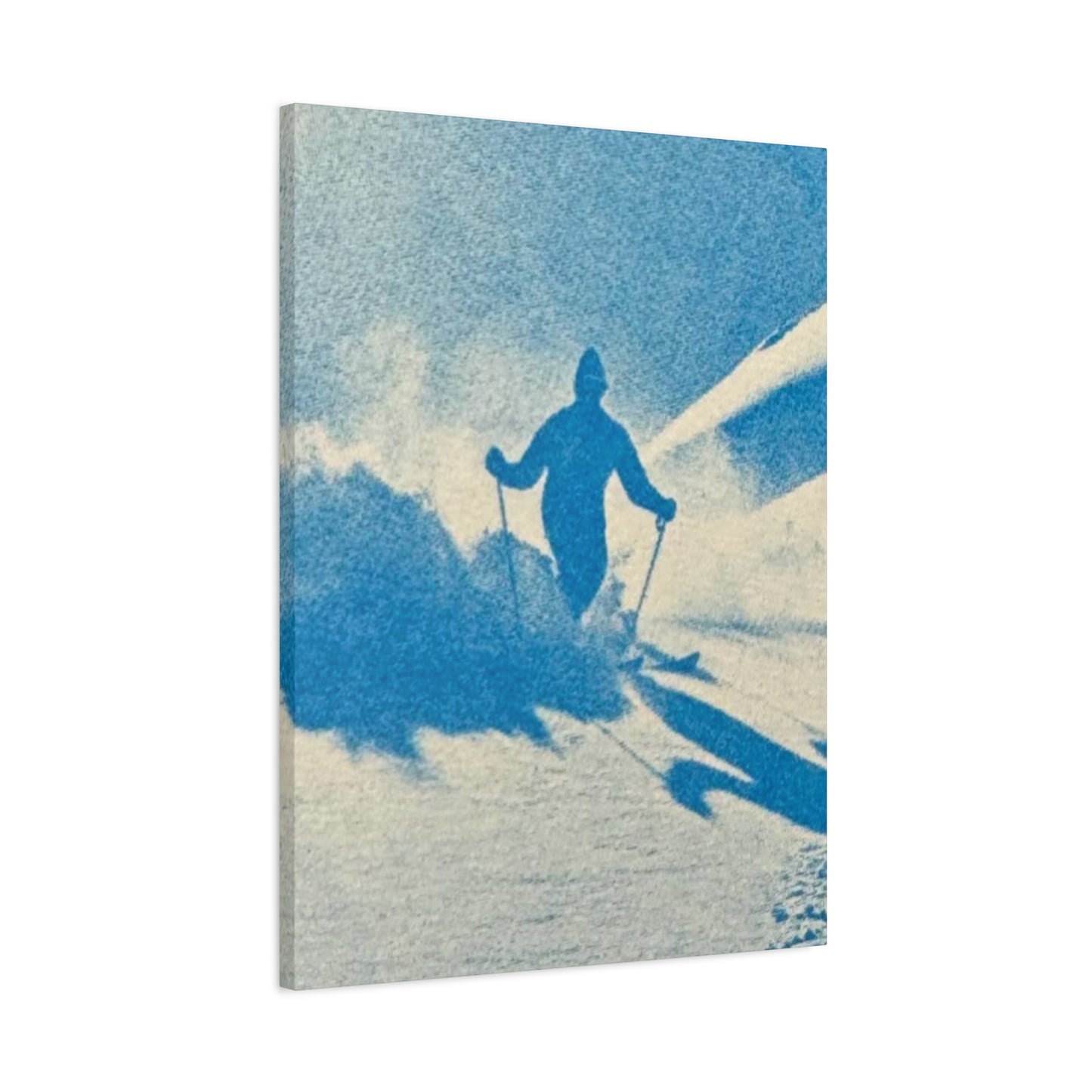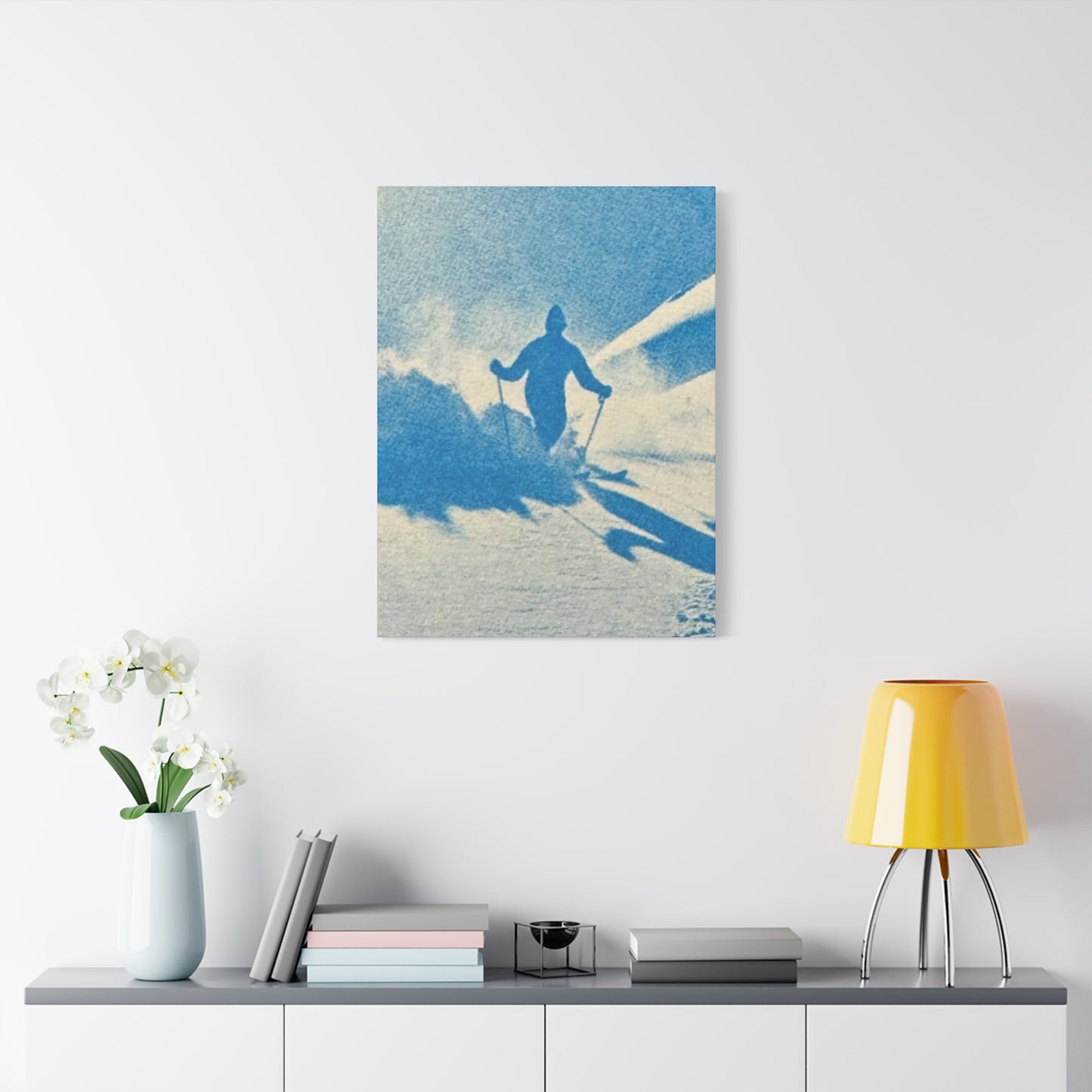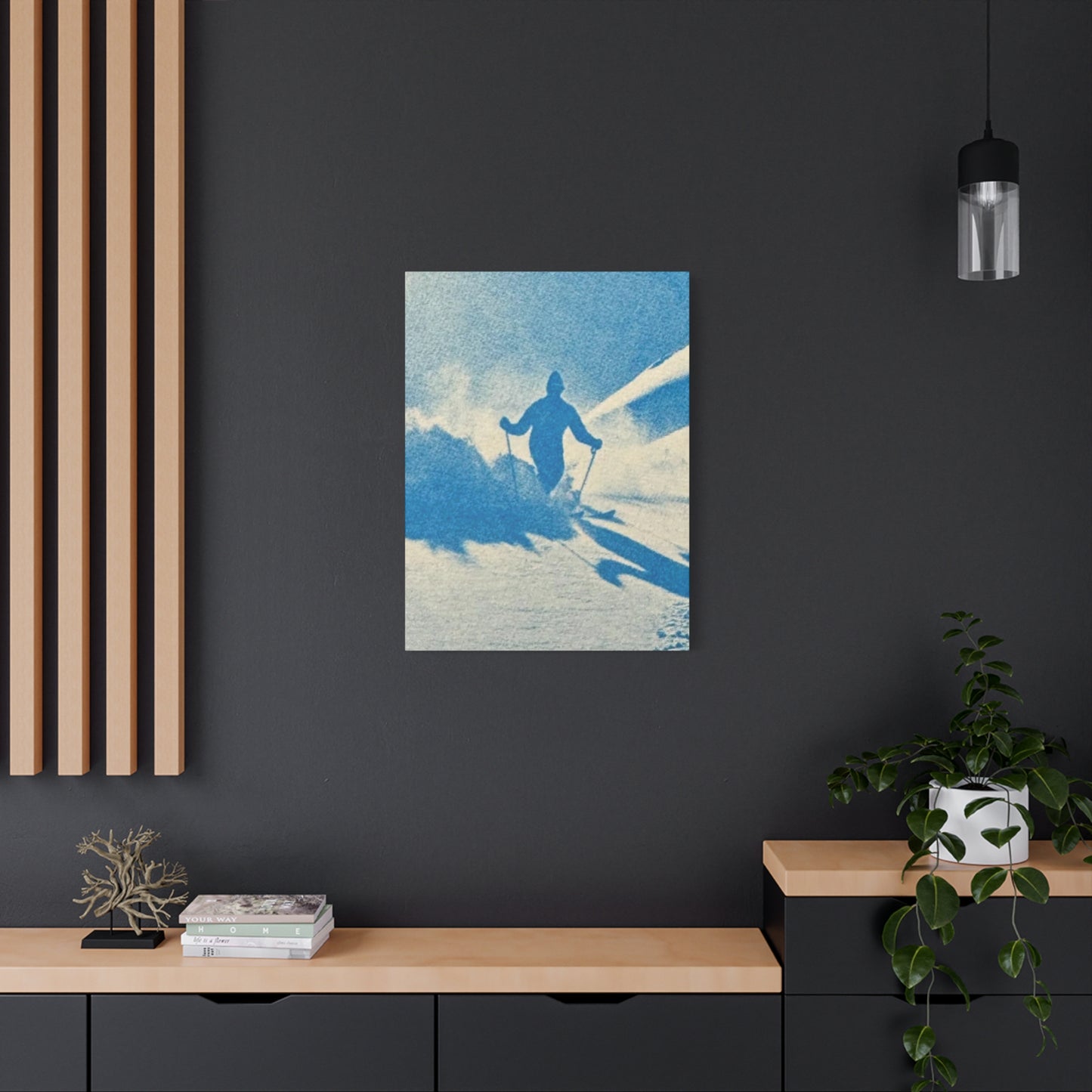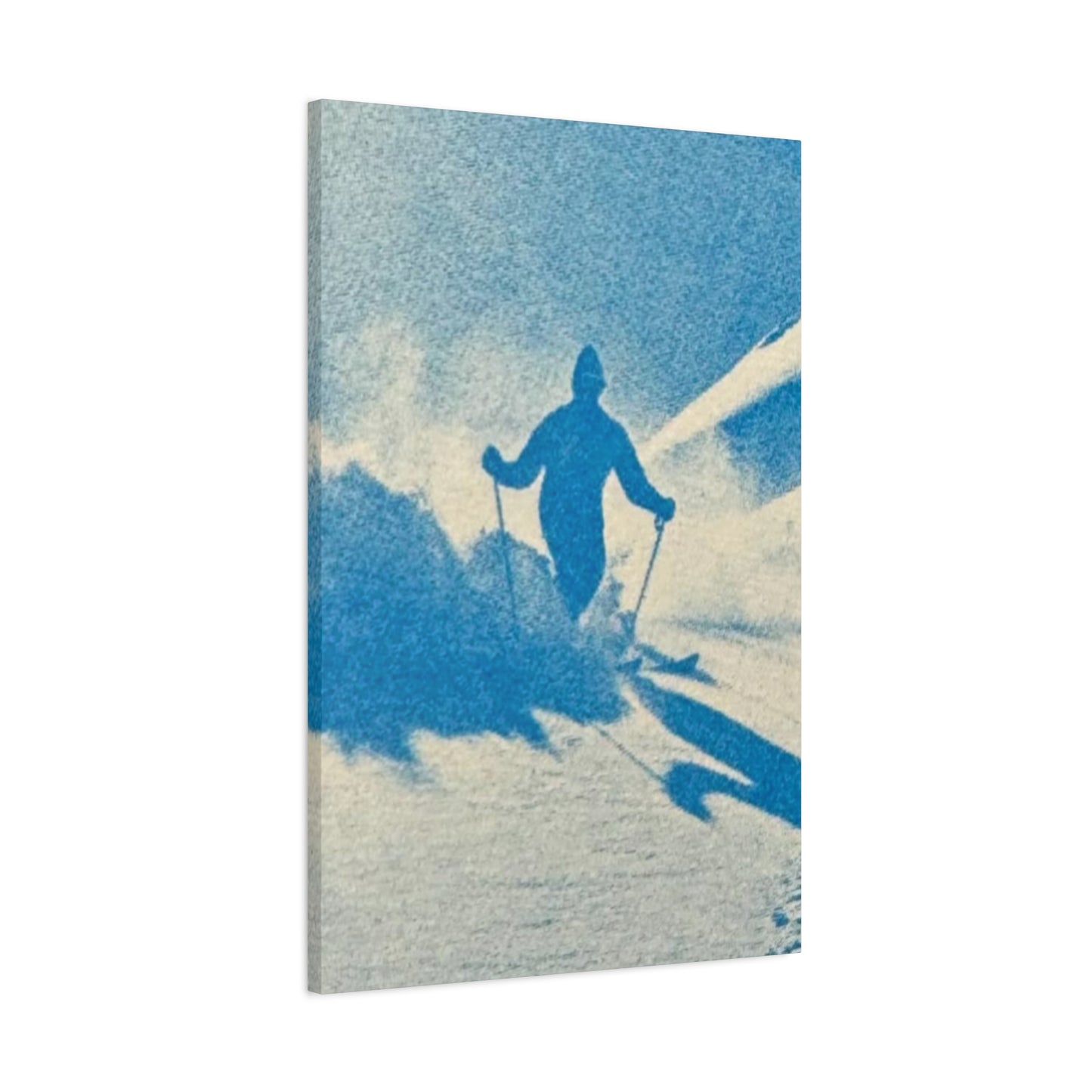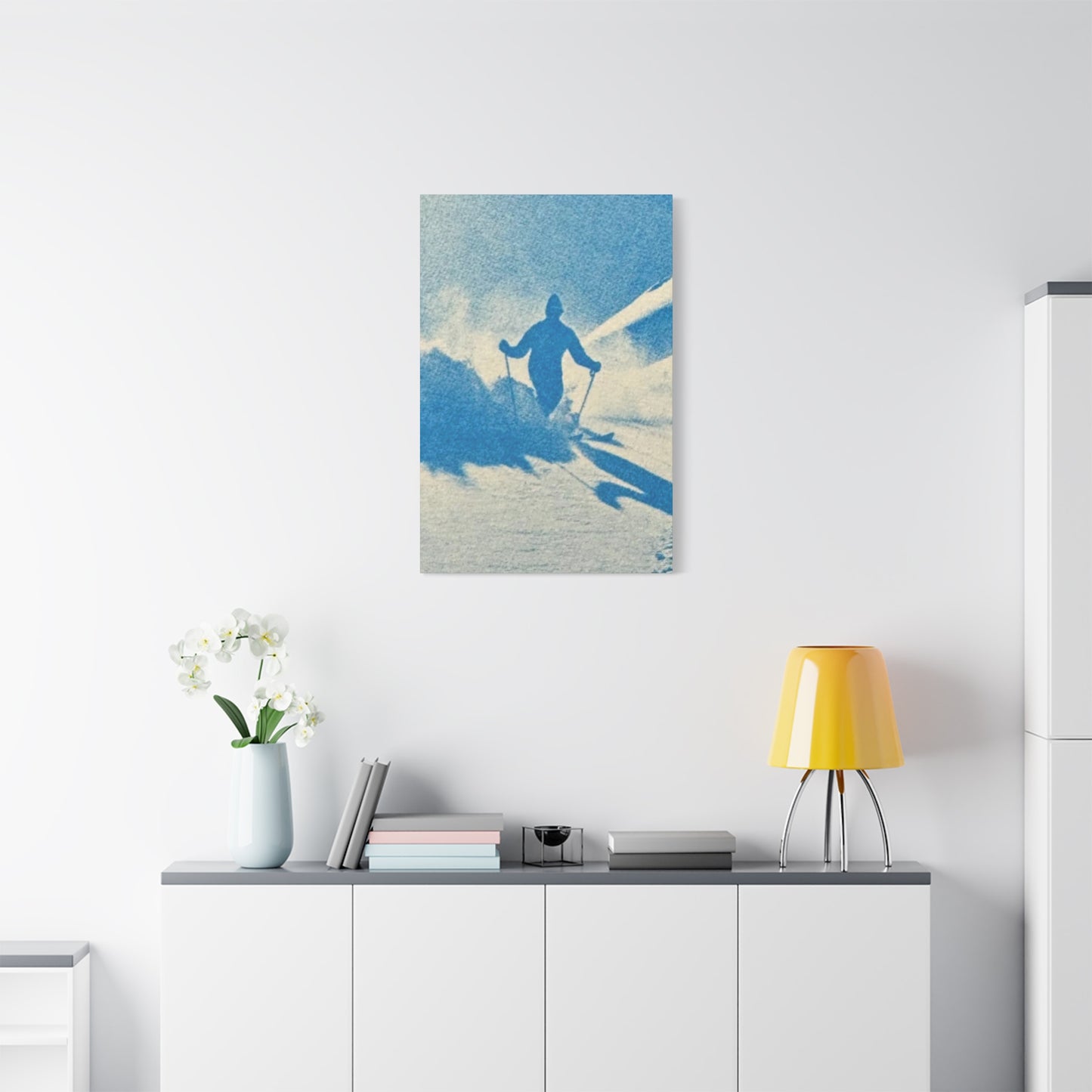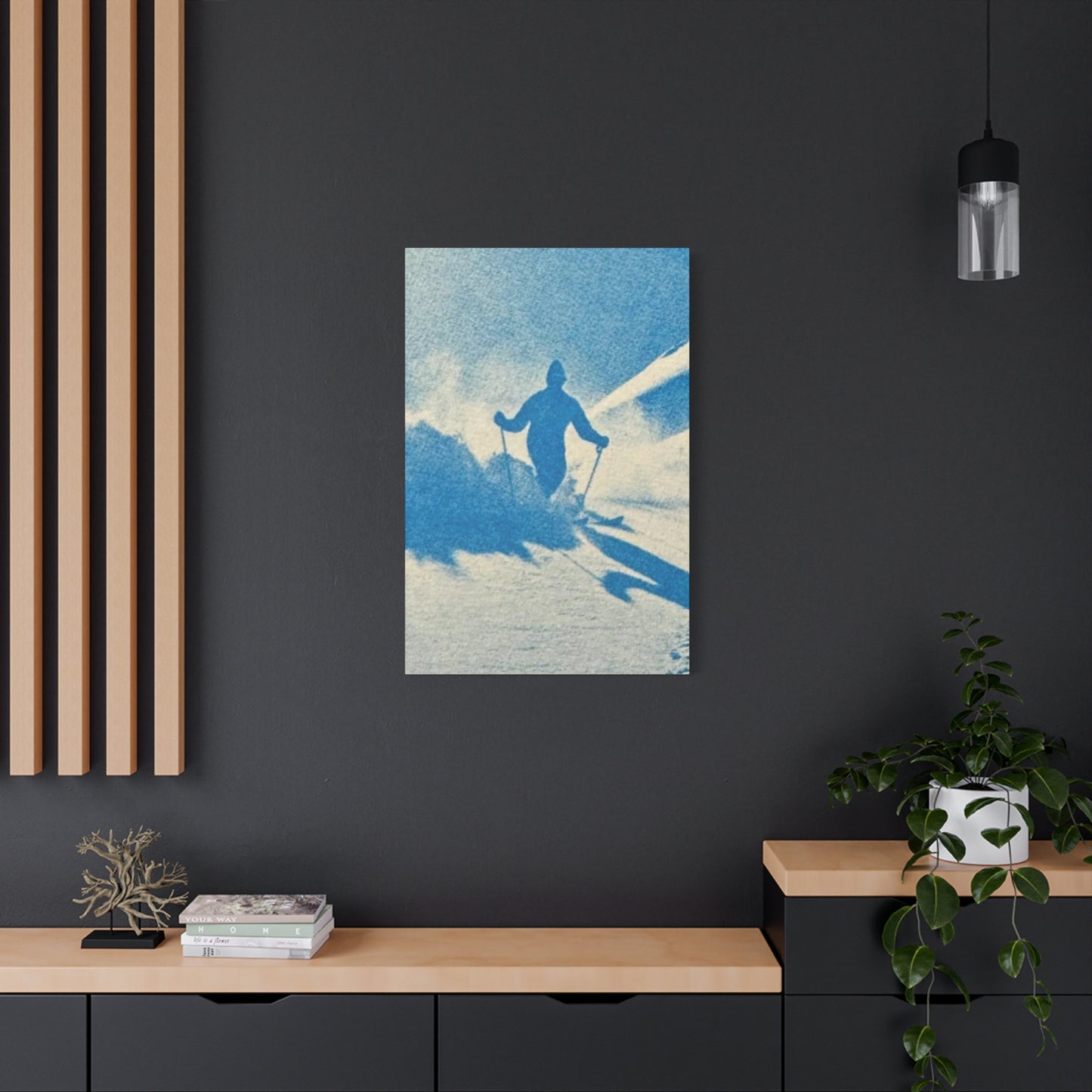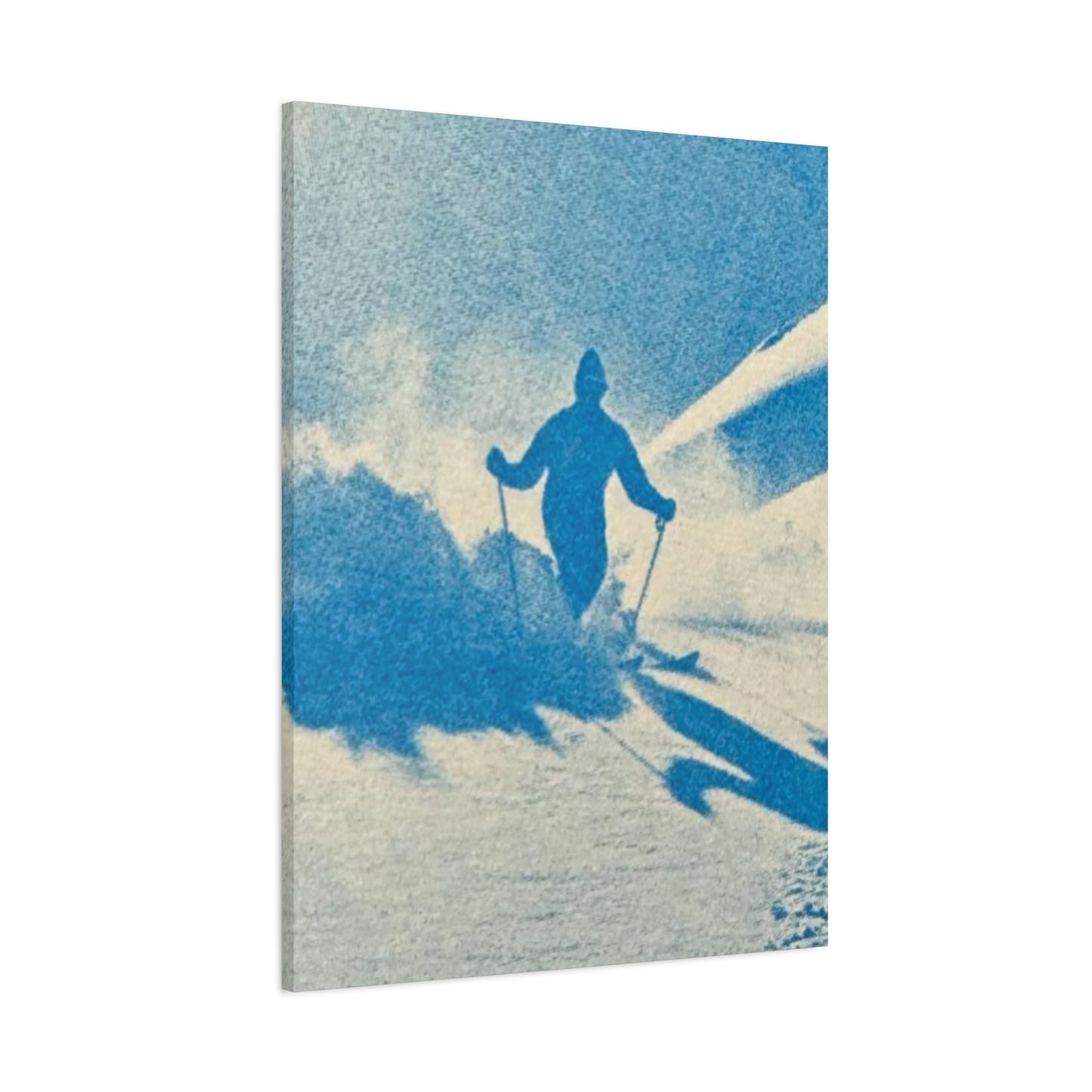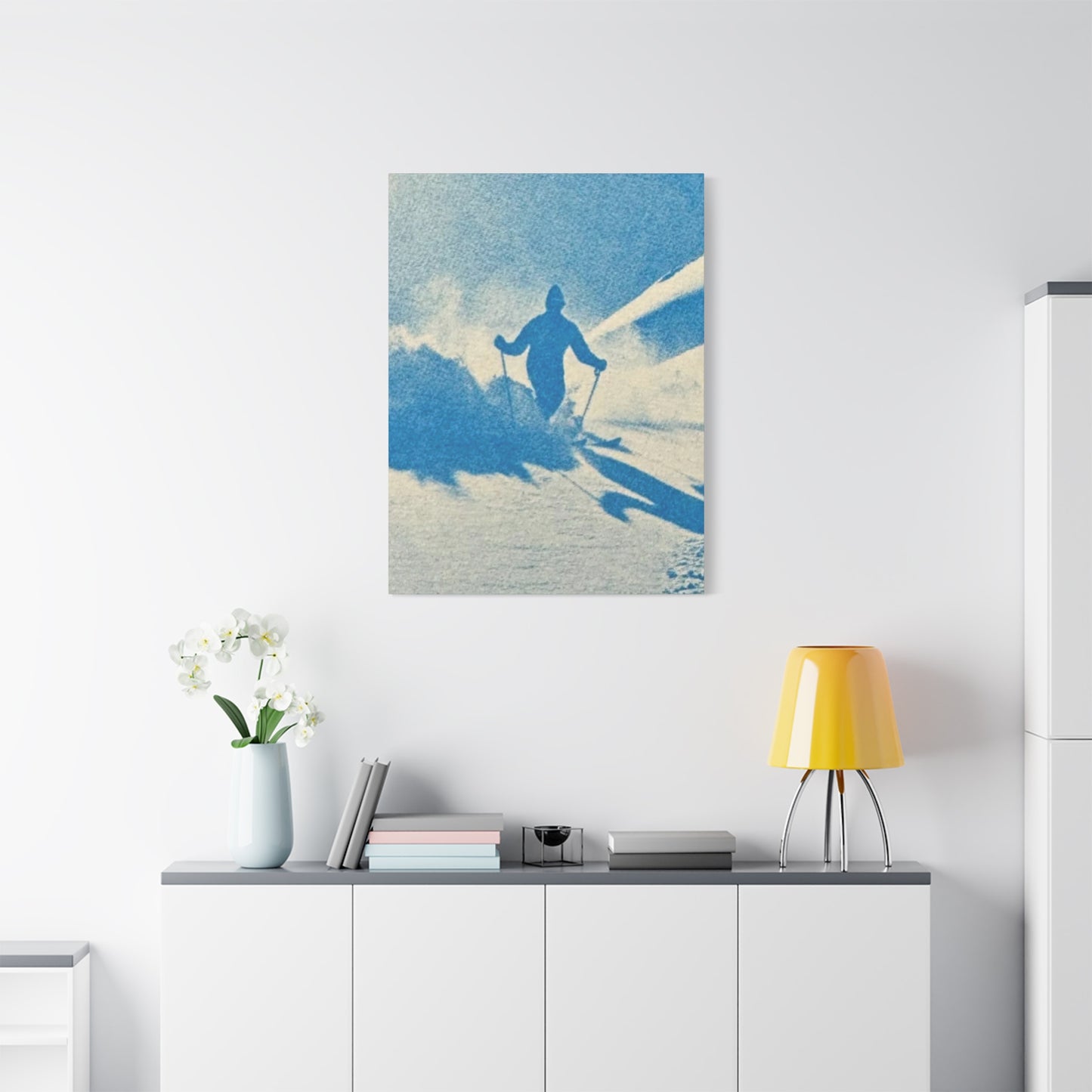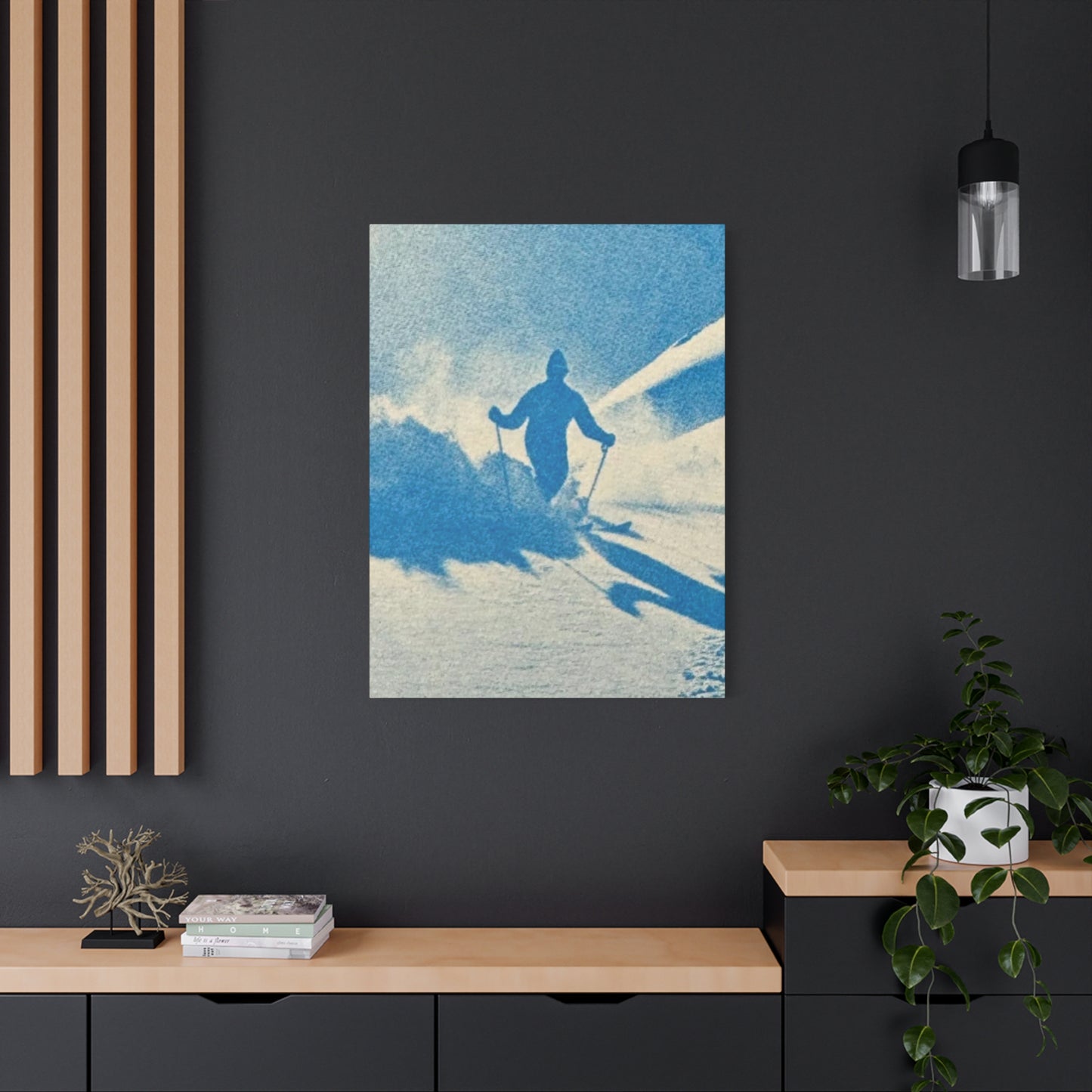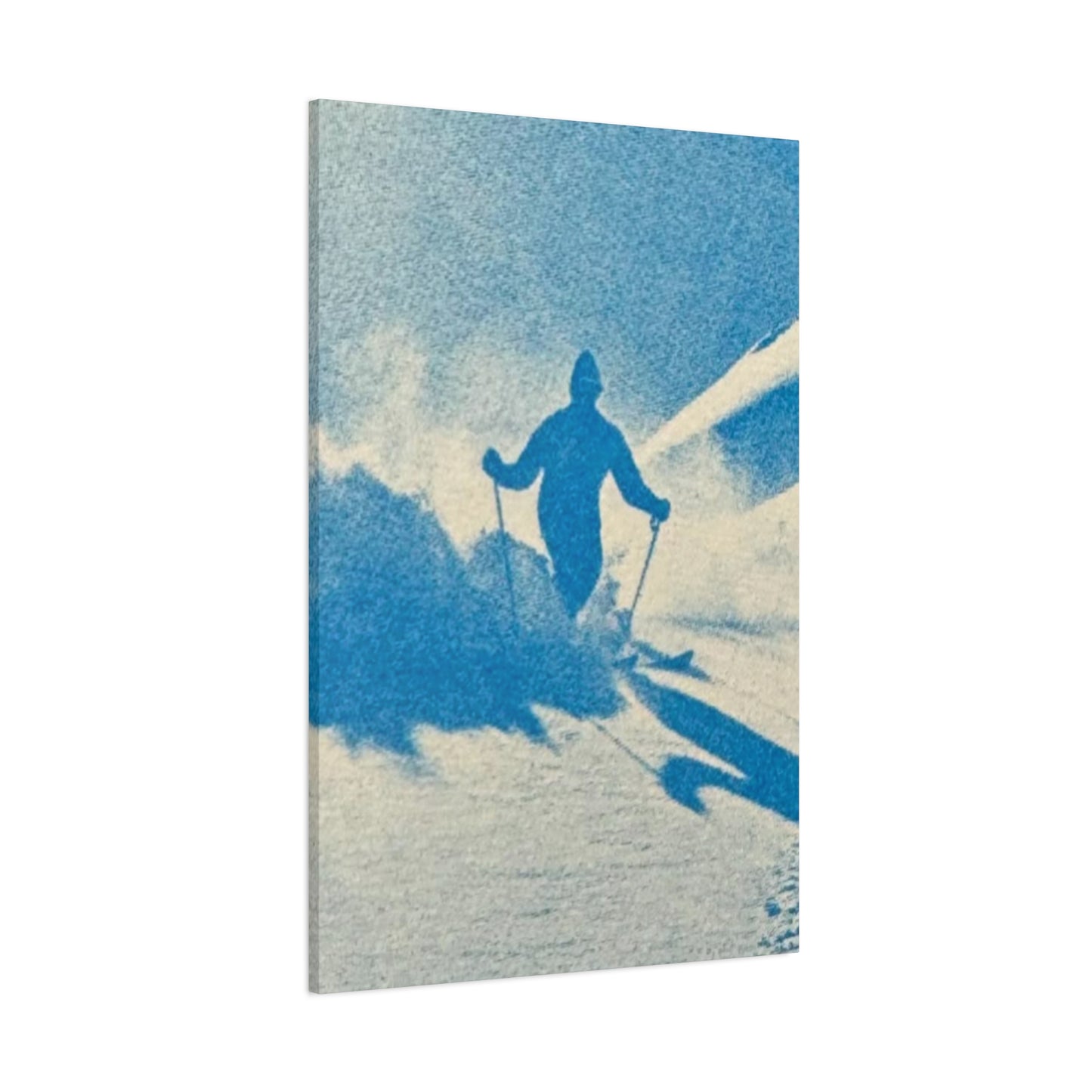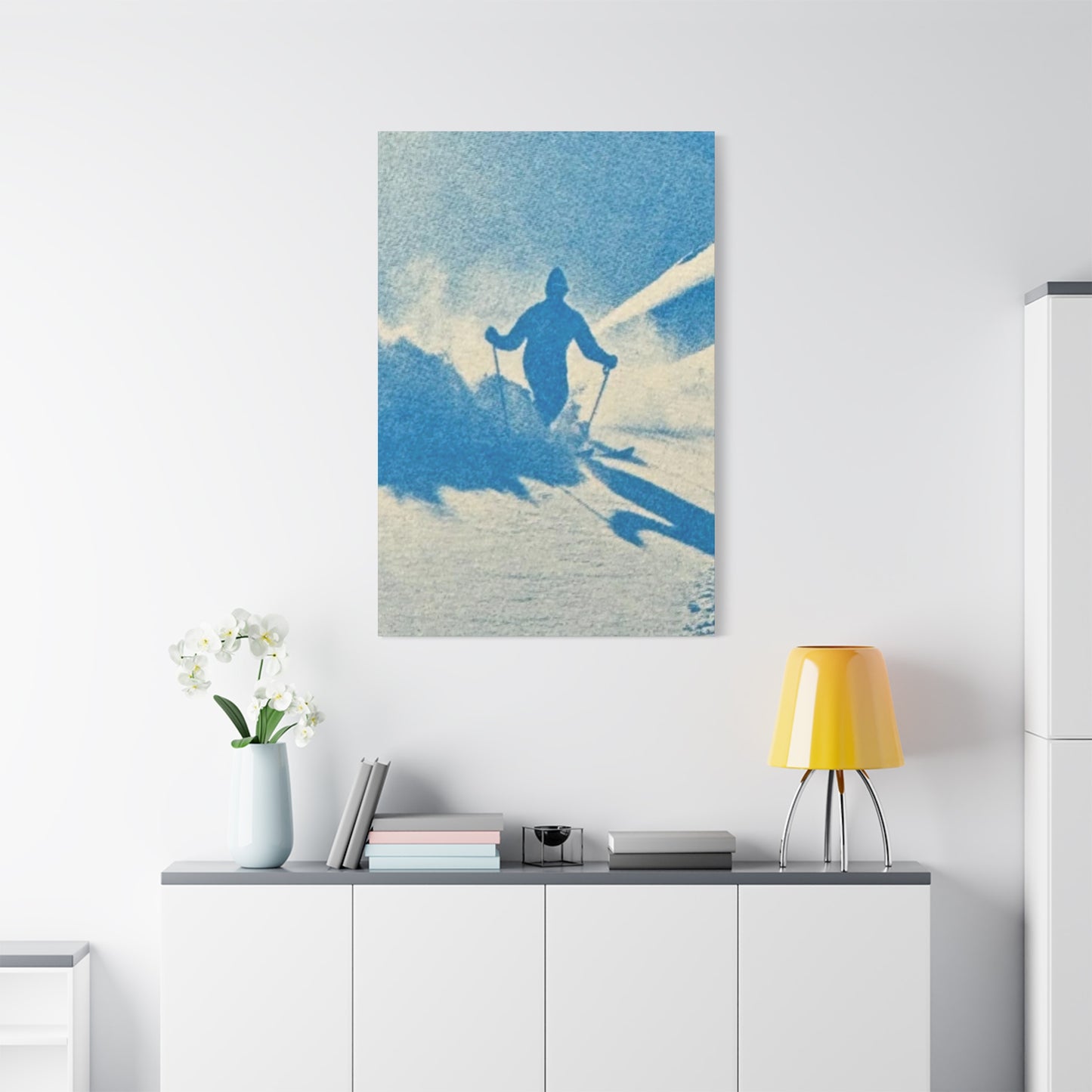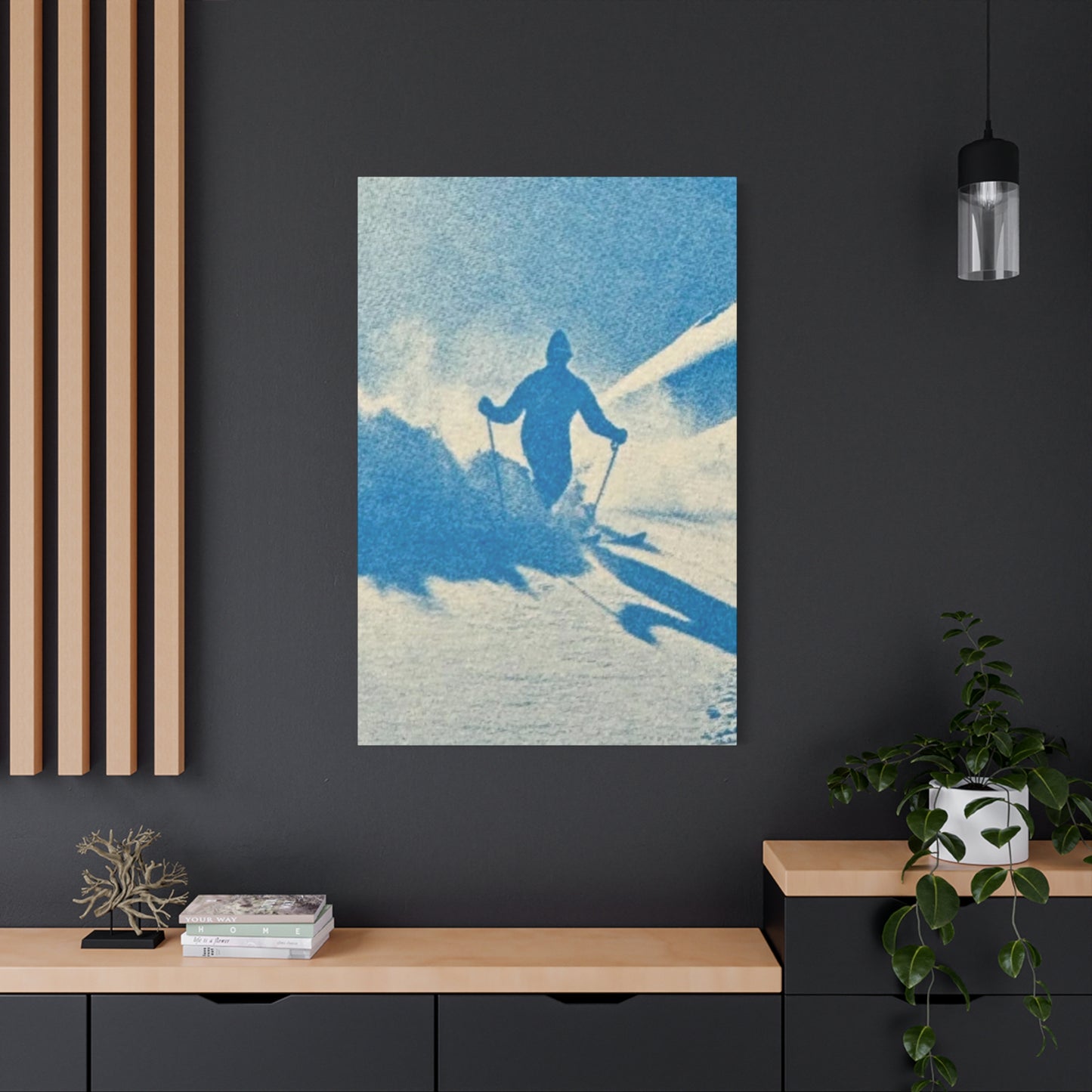Crystal Snow Skiing Wall Art: Transforming Mountain Homes with Sparkling Winter Elegance
The enchanting world of crystal snow skiing wall art represents a fascinating intersection of athletic passion and artistic expression, where the thrill of winter sports meets the refined elegance of crystalline beauty. This captivating art form has emerged as a sophisticated way to celebrate the exhilarating world of alpine adventures while adding a touch of luxurious sparkle to living environments. Whether you're a devoted ski enthusiast, mountain cabin owner, or simply someone who appreciates the aesthetic appeal of winter landscapes, crystal snow skiing wall art offers an extraordinary opportunity to transform ordinary walls into breathtaking displays of frozen beauty and athletic grace.
The growing popularity of this unique art form stems from its ability to capture the essence of winter sports in a way that traditional paintings or photographs simply cannot achieve. Through the incorporation of genuine crystal elements, reflective surfaces, and carefully crafted snow-like textures, these artistic creations literally bring the mountain experience indoors, creating an immersive atmosphere that resonates with viewers on multiple sensory levels. The interplay of light and crystal creates dynamic visual effects that change throughout the day, ensuring that each piece remains visually engaging and never becomes static or boring.
Decorating Your Ski Lodge with Crystal Snow Art
Creating an authentic alpine atmosphere in your ski lodge requires careful consideration of artistic elements that genuinely capture the spirit of mountain living and winter sports culture. Crystal snow art serves as the perfect centerpiece for such environments, offering a sophisticated blend of natural beauty and athletic celebration that resonates deeply with guests and residents alike. The strategic placement of these shimmering masterpieces throughout your lodge can transform ordinary accommodation into an extraordinary retreat that embodies the very essence of mountain luxury.
When selecting crystal snow art for lodge decoration, consider pieces that complement the existing architectural elements while adding layers of visual interest and textural complexity. Large-scale installations work particularly well in common areas such as main lobbies, dining rooms, and lounge spaces, where they can serve as conversation starters and focal points that draw people together. These substantial pieces should incorporate elements that reflect the local mountain terrain, seasonal changes, and the specific skiing culture of your region, creating a sense of place and authenticity that guests will appreciate and remember.
The color palette of your crystal snow art selections should harmonize with the natural materials commonly found in lodge environments, such as exposed wood beams, stone fireplaces, and leather furnishings. Cool blues and whites that evoke fresh powder snow can be balanced with warmer crystal tones that reflect the golden glow of alpine sunsets and cozy firelight. This careful color coordination ensures that your art pieces enhance rather than compete with the existing aesthetic elements of your lodge.
Consider creating themed galleries that tell the story of skiing through different artistic interpretations, from vintage-inspired pieces that celebrate the history of the sport to contemporary works that capture the modern skiing experience. This approach allows guests to journey through different eras and styles of skiing while appreciating the consistent thread of crystal artistry that ties the collection together.
Lighting plays a crucial role in maximizing the impact of crystal snow art in lodge settings. Natural light from large windows can create stunning effects during different times of day, while strategically placed artificial lighting can ensure that the crystal elements continue to sparkle and captivate even during evening hours. Consider installing adjustable lighting systems that allow you to modify the intensity and direction of illumination based on the time of day and the specific atmosphere you wish to create.
The maintenance of crystal snow art in lodge environments requires special attention due to the high-traffic nature of these establishments. Regular cleaning schedules should be established to ensure that dust and fingerprints do not diminish the brilliance of crystal elements, and protective barriers may be necessary in areas where guests might inadvertently touch or damage delicate pieces.
How Crystal Elements Enhance Skiing Wall Art
The incorporation of crystal elements into skiing wall art creates a transformative effect that elevates traditional winter sports imagery to entirely new levels of sophistication and visual impact. These crystalline components serve multiple artistic functions, from catching and reflecting light in mesmerizing ways to adding textural depth and dimensional interest that flat paintings simply cannot achieve. The strategic use of various crystal types, sizes, and placement techniques allows artists to create works that literally sparkle with life and movement, mimicking the way real snow crystals catch sunlight on mountain slopes.
Different types of crystals bring unique properties to skiing wall art compositions. Clear quartz crystals offer brilliant transparency and light refraction that can simulate the appearance of ice formations and fresh snow, while colored crystals such as blue topaz or aquamarine can evoke the deep shadows and varying tones found in mountain snow fields. Larger crystal formations can serve as focal points within compositions, representing prominent geological features or dramatic weather phenomena, while smaller crystal fragments can be used to create textural backgrounds that suggest falling snow or wind-blown powder.
The placement of crystal elements requires careful consideration of both aesthetic impact and practical concerns. Crystals positioned to catch natural light sources will create the most dramatic effects, with morning and evening light producing particularly striking results as the angle of illumination changes throughout the day. Artists often employ mathematical principles of light refraction and reflection to calculate optimal crystal positioning, ensuring that the maximum amount of light interaction occurs while maintaining the overall compositional balance of the piece.
The size and scale of crystal elements must be carefully balanced with other compositional elements to avoid overwhelming the skiing imagery or creating visual discord. Smaller crystals work well for creating atmospheric effects and background textures, while larger specimens can serve as dramatic focal points that anchor the composition and draw the viewer's attention to key areas of the artwork. The gradual transition between different crystal sizes can create a sense of depth and perspective that enhances the three-dimensional quality of the piece.
Crystal mounting techniques have evolved significantly as artists have developed more sophisticated methods for securely attaching these elements to various substrate materials. Advanced adhesives designed specifically for crystal application ensure long-term stability while maintaining optical clarity, and mechanical mounting systems can provide additional security for larger crystal specimens. The choice of mounting method depends on factors such as crystal size, substrate material, expected viewing conditions, and long-term durability requirements.
The interaction between crystal elements and other artistic media opens up endless possibilities for creative expression. Crystals can be combined with traditional painting techniques to create mixed-media works that blend realistic imagery with sparkling accents, or they can be integrated with photographic elements to add dimensionality to captured ski scenes. Digital printing techniques can even incorporate crystal-like effects that complement physical crystal elements, creating seamless transitions between different artistic media.
DIY Crystal Snow Skiing Wall Art Ideas
Creating your own crystal snow skiing wall art projects offers an incredibly rewarding way to combine personal creativity with your passion for winter sports while developing new artistic skills and creating unique pieces that perfectly reflect your individual style and preferences. The DIY approach allows for complete creative control over every aspect of the final piece, from color choices and crystal selection to composition and mounting techniques, ensuring that the finished artwork truly represents your personal vision and aesthetic sensibilities.
Beginning DIY crystal snow skiing projects requires careful planning and preparation, starting with the development of a clear artistic vision and the selection of appropriate materials and tools. Sketch your initial concept on paper, considering factors such as overall composition, crystal placement, color scheme, and the specific skiing elements you want to incorporate. This planning phase is crucial for ensuring that your finished piece will have the visual impact and artistic coherence you desire, while also helping you determine the specific materials and quantities you'll need for successful completion.
Material selection forms the foundation of any successful DIY crystal snow skiing art project. High-quality crystals are essential for achieving professional-looking results, and it's worth investing in genuine gemstone specimens rather than lower-quality synthetic alternatives. Consider visiting local rock and mineral shops or gem shows where you can personally examine crystal quality and select specimens that meet your specific needs. Different crystal types offer various advantages, with clear quartz providing excellent light transmission, amethyst offering beautiful purple tones that can represent distant mountains, and citrine contributing warm golden hues that evoke sunset skiing conditions.
The substrate material for your DIY project should be chosen based on the size and weight of your planned composition, as well as the mounting method you intend to use. Canvas panels work well for smaller projects and offer the advantage of being lightweight and easy to hang, while wood panels provide more structural stability for larger pieces with heavier crystal elements. Metal substrates can create interesting textural contrasts and may be particularly appropriate for modern or industrial-themed compositions.
Tool selection plays a crucial role in the success of DIY crystal snow skiing art projects. High-quality adhesives designed specifically for crystal mounting are essential, along with precision applicators that allow for accurate placement without creating visible residue. Small brushes for detail work, protective gloves for handling sharp crystal edges, and proper lighting for detailed work are all important considerations. More advanced projects might require specialized tools such as dremel rotary tools for creating custom mounting points or small drills for mechanical attachment methods.
The actual construction process should proceed methodically, starting with the preparation of your substrate and the creation of your basic composition using traditional artistic media such as paint, pastels, or photographic elements. Allow these foundational elements to fully cure before beginning crystal application, as this will prevent accidental damage or contamination during the more delicate crystal mounting phase. Work in good lighting conditions and take frequent breaks to step back and evaluate your progress from normal viewing distances.
Safety considerations are paramount when working with crystal elements, as many specimens have sharp edges or points that can cause injury if handled carelessly. Always wear appropriate protective equipment, work in well-ventilated areas when using adhesives, and keep your workspace organized to prevent accidental contact with sharp materials. Store unused crystals in padded containers to prevent damage and maintain their optical quality for future projects.
Capturing Winter Vibes with Crystal Skiing Art
The ability to authentically capture and convey the unique atmosphere and emotional resonance of winter mountain environments through crystal skiing art requires a deep understanding of both the physical characteristics of alpine settings and the psychological impact these environments have on human observers. Winter vibes encompass far more than simple visual representation, extending into realms of temperature sensation, atmospheric mood, seasonal nostalgia, and the profound sense of natural grandeur that winter mountain landscapes evoke in those who experience them firsthand.
Successful winter vibe capture begins with careful observation and analysis of the specific environmental elements that contribute to the overall winter mountain experience. The quality of light in alpine settings differs dramatically from that found in other environments, with the combination of snow reflection, high altitude atmosphere, and angular winter sun creating unique illumination conditions that must be understood and replicated in artistic form. Crystal elements prove particularly effective at recreating these lighting conditions, as their natural light-refracting properties can simulate the complex interplay of illumination and reflection that characterizes real mountain snow fields.
The emotional resonance of winter skiing environments stems from a complex combination of physical sensations, visual stimuli, and psychological associations that artists must carefully consider when creating works intended to evoke these feelings. The crisp clarity of mountain air, the satisfying crunch of fresh snow underfoot, the exhilaration of speed and movement down pristine slopes, and the profound silence of snow-covered landscapes all contribute to the overall winter skiing experience. Crystal skiing art can capture and convey these multi-sensory experiences through careful attention to visual metaphors and symbolic representations that trigger appropriate emotional responses in viewers.
Color temperature plays a crucial role in establishing authentic winter vibes within crystal skiing art compositions. The predominantly cool color palette of winter mountain environments, dominated by various shades of blue and white, must be carefully balanced with strategic warm accents that prevent the overall composition from becoming emotionally cold or uninviting. Golden crystal elements can represent the warmth of alpine sun or cozy lodge fires, while subtle pink and orange tones can evoke the spectacular colors of mountain sunrises and sunsets that skiers often witness during their adventures.
Textural contrast becomes particularly important when attempting to capture winter vibes through artistic means. The smooth, reflective surfaces of crystal elements can represent the hard, icy surfaces found on groomed ski runs, while rougher crystal textures can evoke the granular quality of fresh powder snow or the irregular surfaces of wind-sculpted snow formations. The interplay between these different textural elements creates visual interest while reinforcing the authentic mountain environment feeling that the artwork seeks to convey.
Atmospheric perspective, the visual phenomenon where distant objects appear hazier and less distinct than nearby ones, plays a crucial role in creating convincing winter mountain landscapes. Crystal elements can be used to enhance this effect, with larger, more brilliant crystals representing nearby snow formations and smaller, more subtle crystal accents suggesting distant peaks and snow fields. This layered approach to crystal application creates a sense of depth and scale that helps viewers feel as though they are actually present within the mountain environment rather than simply observing it from outside.
The psychological impact of winter mountain environments often includes feelings of solitude, contemplation, and connection with natural forces that dwarf human scale and significance. Crystal skiing art can evoke these profound emotions through careful composition choices that emphasize the vastness of mountain landscapes and the relative smallness of human figures within these environments. The use of crystal elements to create expansive sky effects and sweeping snow field representations helps establish the sense of scale and grandeur that characterizes authentic winter mountain experiences.
The Appeal of Snow and Crystal in Wall Decor
The enduring fascination with snow and crystal as decorative elements stems from their unique ability to introduce elements of natural beauty, seasonal variation, and tactile luxury into domestic environments while creating visual effects that remain engaging and dynamic throughout different lighting conditions and seasons. This appeal transcends simple aesthetic appreciation, tapping into deeper psychological associations with purity, tranquility, natural cycles, and the transformative power of seasonal change that resonates with human observers on fundamental emotional levels.
Snow represents one of nature's most remarkable transformative phenomena, capable of completely altering familiar landscapes and creating entirely new visual environments within a matter of hours. This transformative quality makes snow-themed wall decor particularly appealing to those who appreciate the concept of environmental renewal and seasonal change within their living environments. Crystal elements enhance this appeal by capturing and preserving the ephemeral beauty of snow formations while adding the permanence and durability that natural snow lacks, creating artworks that can maintain their winter magic throughout all seasons of the year.
The optical properties of both snow and crystal contribute significantly to their decorative appeal, as both materials interact with light in complex and visually striking ways that create dynamic visual effects throughout different times of day and under varying lighting conditions. Natural snow crystals demonstrate remarkable geometric precision and symmetrical beauty that has fascinated humans throughout history, while crystal elements in wall decor can reproduce and amplify these same geometric principles while adding enhanced light refraction and reflection capabilities that create even more dramatic visual effects.
The psychological associations connected with snow and crystal imagery tap into fundamental human connections with seasonal cycles, childhood memories, and cultural traditions that span across different societies and historical periods. Snow often evokes memories of winter holidays, family gatherings, outdoor adventures, and the special quiet that settles over snow-covered landscapes, while crystals have long been associated with luxury, magic, healing properties, and spiritual significance in various cultural traditions. Wall decor incorporating these elements can trigger these positive associations and create emotional connections that go far beyond simple visual appreciation.
The versatility of snow and crystal themes allows for their successful integration into a wide variety of decorating styles and environments, from rustic mountain cabins to sleek urban apartments, from traditional lodge settings to contemporary minimalist homes. This adaptability stems from the fundamental neutrality of snow and crystal color palettes, which tend to work harmoniously with most existing color schemes while adding textural interest and visual sophistication without overwhelming other decorative elements.
The practical advantages of crystal elements in wall decor include their durability, low maintenance requirements, and ability to maintain their visual impact over extended periods without fading, deterioration, or loss of optical quality. Unlike natural snow, which melts and disappears, or painted snow representations, which may fade or become damaged over time, high-quality crystal elements can maintain their brilliance and visual impact for decades when properly cared for and displayed.
The seasonal flexibility of snow and crystal wall decor represents another significant advantage, as these themes can complement different seasonal decorating approaches while maintaining their core appeal throughout the year. During winter months, snow and crystal elements reinforce and celebrate the natural season, while during warmer months they can provide a cooling visual effect and reminder of winter's refreshing qualities.
Combining Crystals and Ski Scenes in Art
The artistic fusion of crystalline elements with dynamic ski scene imagery creates a unique hybrid art form that successfully bridges the gap between representational sports art and abstract decorative elements, resulting in compositions that celebrate both the athletic achievement and natural beauty inherent in winter mountain sports. This combination approach allows artists to create works that appeal to both sports enthusiasts and art collectors while offering multiple layers of visual interest and interpretive meaning that can be appreciated from various perspectives and at different viewing distances.
The technical challenges involved in successfully combining crystals with ski scene imagery require careful consideration of compositional balance, scale relationships, and visual hierarchy to ensure that neither element overwhelms the other and that both contribute meaningfully to the overall artistic impact of the finished piece. Ski scenes typically involve dynamic movement, human figures, and recognizable landscape elements, while crystal components tend to be more abstract and decorative in nature. Successfully merging these different artistic approaches requires sophisticated understanding of both representational and abstract artistic principles.
The placement of crystal elements within ski scene compositions must be planned to enhance rather than distract from the narrative content of the skiing imagery while adding visual interest and textural variety that elevates the overall sophistication of the piece. Crystals can be used to represent environmental elements such as falling snow, ice formations, or atmospheric effects, or they can serve as purely decorative accents that add sparkle and luxury to the composition without necessarily representing specific physical phenomena within the ski scene.
Scale considerations become particularly important when combining representational ski imagery with abstract crystal elements, as the relative sizes of these different components must be carefully balanced to create visual harmony rather than discord. Large crystal elements may work well as background elements representing distant mountain peaks or sky formations, while smaller crystals can be used for detail work such as snow effects or atmospheric sparkle that enhances the realism of the ski scene without overwhelming the human figures or equipment that typically serve as focal points.
Color coordination between crystal elements and ski scene imagery requires careful attention to both realistic color relationships and artistic color harmony principles. The colors present in ski scenes typically include the bright hues of ski equipment and clothing, the varied tones of mountain landscapes, and the predominantly cool palette of snow and sky elements. Crystal selections must complement these existing colors while adding their own unique optical effects that enhance rather than compete with the established color scheme.
The temporal aspects of ski scene imagery can be enhanced through strategic crystal placement that reinforces the sense of movement and change inherent in skiing activities. Crystals can be arranged to suggest motion blur effects, speed lines, or the spray of snow kicked up by fast-moving skiers, adding to the dynamic quality of the composition while maintaining the static nature required for wall art display. These motion-suggesting crystal arrangements can help viewers feel the excitement and energy of skiing even when viewing the artwork from a stationary position.
The integration of crystal elements with photographic ski scene imagery presents unique opportunities and challenges, as the realistic nature of photography must be carefully balanced with the more fantastical or decorative qualities of crystal elements. This combination can be particularly effective when crystals are used to enhance or exaggerate natural phenomena present in the original photograph, such as snow spray, ice formations, or atmospheric effects that were present but perhaps not prominent in the original image.
Modern Crystal Snow Skiing Wall Art Styles
Contemporary approaches to crystal snow skiing wall art reflect broader trends in modern artistic expression while incorporating technological advances in materials, manufacturing processes, and installation techniques that allow for increasingly sophisticated and ambitious artistic creations. Modern styles tend to emphasize clean lines, geometric precision, and innovative material combinations while maintaining the essential connection to winter sports themes and crystal aesthetics that define this art form.
Minimalist modern styles focus on reducing compositional elements to their most essential components while maximizing the visual impact of each remaining element through careful selection, placement, and presentation. In crystal snow skiing art, this approach might involve using a limited number of high-quality crystal specimens as focal points within compositions that rely on subtle color variations and negative environmental elements rather than complex imagery or busy compositional arrangements. The result is artwork that conveys the essence of skiing and winter environments through suggestion and implication rather than literal representation.
Abstract modern interpretations of crystal snow skiing themes allow artists to explore the emotional and sensory aspects of winter sports without being constrained by realistic representation or literal imagery. These styles might use crystal arrangements to suggest movement, speed, temperature, or emotional states associated with skiing while incorporating color fields, geometric patterns, or organic flowing forms that evoke winter mountain environments without directly depicting them. This approach appeals particularly to collectors who appreciate conceptual art and non-literal interpretations of familiar themes.
Industrial modern styles incorporate materials and aesthetic approaches borrowed from contemporary architecture and industrial design, often featuring metal frameworks, exposed mounting systems, and precisely engineered crystal placement that emphasizes the technological and mechanical aspects of both skiing equipment and artistic construction. These styles appeal to those who appreciate the intersection of technology and nature that characterizes modern skiing while celebrating the precision engineering that makes both high-performance ski equipment and sophisticated crystal art installations possible.
Digital integration represents one of the most cutting-edge developments in modern crystal snow skiing wall art, with some artists incorporating LED lighting systems, color-changing crystal elements, or even interactive sensors that respond to viewer presence or environmental conditions. These technologically enhanced installations can create dynamic light shows that change throughout the day or respond to seasonal variations, adding an element of performance art to traditional wall-mounted displays.
Mixed media approaches combine crystal elements with contemporary materials such as acrylic panels, fiber optic systems, laser-etched substrates, or 3D-printed components to create hybrid artworks that push the boundaries of traditional crystal art while maintaining connections to skiing themes and winter mountain aesthetics. These innovative combinations often result in artworks that offer multiple viewing experiences depending on lighting conditions, viewing angles, or interactive elements.
Sustainable modern styles reflect growing environmental consciousness by incorporating recycled materials, ethically sourced crystals, and environmentally responsible production methods into crystal snow skiing art creations. These approaches appeal to environmentally conscious collectors and align with the outdoor recreation community's increasing focus on environmental stewardship and sustainable practices.
Modular modern systems allow for customizable installations that can be modified, expanded, or reconfigured according to changing preferences or environmental requirements. These systems typically feature standardized mounting interfaces and interchangeable components that make it possible to create personalized arrangements while maintaining professional appearance and structural integrity.
Crystal Snow Art for Winter Sports Fans
Winter sports enthusiasts represent a particularly receptive audience for crystal snow art, as these individuals possess both the personal experience necessary to appreciate accurate winter mountain representations and the emotional connection to skiing that makes such artwork personally meaningful rather than merely decorative. Creating crystal snow art specifically for this audience requires understanding not only their aesthetic preferences but also their deep personal relationships with winter mountain environments and the specific cultural elements that define winter sports communities.
The authenticity of crystal snow art becomes particularly important when creating pieces for knowledgeable winter sports fans who can immediately recognize whether artistic representations accurately capture the real conditions, equipment, techniques, and environments they know intimately. This audience appreciates attention to technical details such as proper skiing form, accurate equipment representation, realistic snow conditions, and authentic mountain geography that casual observers might overlook but which true enthusiasts notice and value highly.
Seasonal timing considerations play a crucial role in marketing crystal snow art to winter sports fans, as these individuals typically experience heightened interest in winter-themed artwork during late summer and early fall months when anticipation for the upcoming ski season reaches its peak. This natural buying cycle should inform both the creation and promotion of crystal snow art pieces, with new collections ideally debuting during periods when winter sports enthusiasm runs highest among the target audience.
The gift potential of crystal snow art for winter sports fans extends beyond simple decoration to encompass meaningful commemorations of shared experiences, milestone achievements, or significant locations that hold personal importance within individual skiing histories. Custom pieces that incorporate specific mountain locations, particular ski runs, or personal skiing photographs can create deeply meaningful gifts that celebrate not just the sport itself but individual relationships with winter mountain environments.
Regional preferences among winter sports fans often reflect the specific characteristics of local mountain areas, skiing conditions, and cultural traditions that define different winter sports communities. Artists creating for this market benefit from understanding these regional differences and creating pieces that resonate with local skiing culture while maintaining broader appeal to the general winter sports community.
The collector aspect of winter sports fan culture creates opportunities for crystal snow art series that can be collected over time, with individual pieces complementing each other while standing alone as complete artworks. This approach appeals to fans who enjoy building comprehensive collections that document different aspects of their winter sports interests while providing artists with opportunities for ongoing relationships with dedicated collectors.
Equipment evolution within winter sports creates opportunities for crystal snow art that celebrates both historical and contemporary aspects of skiing culture, from vintage equipment celebrations to cutting-edge technology representations that appeal to fans interested in the technical progression of their sport. These historical perspectives can add educational value to purely aesthetic appeal.
Competition and achievement themes resonate strongly with winter sports fans who understand the dedication, skill development, and personal challenges involved in mastering winter mountain sports. Crystal snow art that captures the intensity, focus, and triumph associated with skiing achievement can create emotional connections that go far beyond simple sport representation.
Materials Behind Crystal Snow Skiing Art
The material foundations of crystal snow skiing art encompass a diverse range of natural and synthetic components, each contributing specific optical, structural, and aesthetic properties that combine to create the final artistic effect. Understanding these materials and their individual characteristics allows for informed appreciation of crystal snow skiing art while providing insight into the technical considerations and creative decisions that artists must navigate during the creation process.
Natural crystal materials form the cornerstone of authentic crystal snow skiing art, with quartz varieties being among the most popular choices due to their excellent optical clarity, durability, and availability in various sizes and formations. Clear quartz provides brilliant transparency and light refraction effects that effectively simulate ice and fresh snow conditions, while smoky quartz adds subtle gray tones that can represent shadows, distant mountains, or atmospheric depth within compositions. Amethyst crystals contribute purple hues that can evoke sunset mountain scenes or the deep shadows found in winter mountain environments.
Semi-precious gemstone materials expand the palette of available colors and effects, with aquamarine and blue topaz providing the intense blue tones associated with mountain skies and deep snow shadows, while citrine and golden quartz can represent warm sunlight effects and the golden glow of alpine sunrises and sunsets. These natural materials bring not only color but also the unique optical properties that distinguish genuine gemstones from synthetic alternatives, including superior light transmission, complex internal structures, and the subtle color variations that make natural stones more visually interesting than uniform synthetic materials.
Synthetic crystal materials offer advantages in terms of consistency, availability, and cost while providing optical effects that can complement or enhance natural crystal elements within larger compositions. High-quality synthetic crystals can achieve optical clarity and color saturation that rivals natural materials while offering greater size consistency and fewer internal flaws that might interfere with light transmission. However, experienced collectors and artists often prefer natural materials for their unique characteristics and authentic geological origins.
Substrate materials provide the foundation upon which crystal elements are mounted and must be selected based on considerations of weight bearing capacity, visual compatibility, longevity, and installation requirements. Wood panels offer natural warmth and texture that complements crystal elements while providing excellent structural stability for heavier installations. Canvas substrates work well for smaller pieces and offer the advantage of lighter weight and easier shipping, while metal substrates can create dramatic modern effects and provide maximum durability for large-scale installations.
Mounting and adhesive materials play crucial roles in ensuring the long-term stability and optical clarity of crystal elements while remaining invisible to viewers and not interfering with the intended aesthetic effects. Advanced structural adhesives designed specifically for crystal mounting provide strong bonds that maintain clarity over time, while mechanical mounting systems using discrete hardware can provide additional security for valuable or particularly large crystal specimens.
Protective coating materials may be necessary in certain environments or applications to protect crystal elements from dust accumulation, moisture damage, or physical contact that could cause damage or reduce optical clarity. These coatings must be selected carefully to avoid interfering with light transmission or creating unwanted visual effects while providing the necessary protection for long-term durability.
Background and enhancement materials include paints, pastels, photographic elements, and digital media that work together with crystal components to create complete artistic compositions. These materials must be selected for compatibility with crystal elements in terms of color harmony, visual weight, and long-term stability under various lighting and environmental conditions.
Crystal Skiing Art in Mountain Homes
Mountain home environments present unique opportunities and challenges for crystal skiing art display, as these settings typically feature architectural elements, natural lighting conditions, and atmospheric characteristics that can either enhance or complicate the visual impact of crystalline art pieces. The successful integration of crystal skiing art into mountain home environments requires careful consideration of existing architectural features, local environmental conditions, and the specific lifestyle patterns of mountain home inhabitants.
Architectural integration considerations begin with understanding how crystal skiing art can complement or contrast with the natural materials commonly found in mountain home construction, including exposed wood beams, natural stone surfaces, and large windows that frame mountain views. Crystal elements can create beautiful interactions with these natural materials, reflecting warm wood tones and creating interesting light patterns on stone surfaces while competing or harmonizing with the natural mountain views visible through windows.
The natural lighting conditions present in mountain environments can create spectacular effects when properly utilized in crystal skiing art display, but they also present challenges in terms of seasonal variation, directional changes throughout the day, and the intense brightness that can occur at high altitudes. South-facing installations may receive intense direct sunlight that creates dramatic crystal effects but may also cause glare problems or fading of other artwork components, while north-facing installations may receive more consistent but softer illumination that provides steady crystal sparkle without overwhelming brightness.
Climate considerations specific to mountain environments include temperature variations, humidity fluctuations, and the potential for condensation that can affect crystal clarity and mounting adhesive performance over time. Mountain homes often experience significant temperature swings between day and night or between different seasons, and these variations can create expansion and contraction cycles that stress mounting systems and potentially affect the long-term stability of crystal installations.
The lifestyle patterns of mountain home inhabitants often include seasonal residency, frequent entertaining of guests, and emphasis on outdoor recreation activities that can influence both the selection and placement of crystal skiing art. Seasonal residents may prefer artwork that requires minimal maintenance and can withstand periods of vacancy, while frequent entertainers might prioritize pieces that serve as conversation starters and can be appreciated by visitors with varying levels of art knowledge or skiing experience.
Security considerations become particularly important in mountain home environments, where homes may be vacant for extended periods and where the remote locations might make professional security monitoring less reliable. Valuable crystal art pieces may require special mounting systems, security hardware, or insurance considerations that differ from those needed in urban environments with more consistent occupancy and security presence.
The integration of crystal skiing art with other mountain home decorative elements requires careful consideration of scale, style, and thematic consistency to avoid creating visual discord or competing focal points within rooms that may already feature dramatic natural views and substantial architectural elements. The artwork should enhance rather than compete with the mountain home experience while maintaining its own visual impact and artistic integrity.
Maintenance accessibility presents practical considerations for mountain home crystal art installations, as the remote locations and seasonal accessibility of many mountain properties may make regular professional maintenance visits impractical. Installations should be designed for easy owner maintenance with clear instructions for cleaning and basic care that can be performed without specialized tools or expertise.
Adding Sparkle to Ski-themed Wall Art
The incorporation of sparkling elements into ski-themed wall art transforms static representations into dynamic visual experiences that capture and amplify the natural brilliance and energy associated with winter mountain environments. This transformation goes beyond simple decoration to create artwork that literally brings the dazzling effects of sunlight on snow, the crystalline clarity of mountain air, and the exhilarating brightness of alpine conditions into domestic environments where they can be enjoyed year-round.
Light interaction principles form the foundation of effective sparkle integration, as understanding how different materials and surface treatments interact with various light sources allows artists to create controlled and predictable sparkling effects that enhance rather than overwhelm the underlying ski-themed imagery. Direct light sources create the most dramatic sparkling effects but must be carefully positioned to avoid creating glare or visual discomfort, while indirect lighting can provide more subtle sparkle that adds visual interest without dominating the composition.
Material selection for sparkling effects encompasses a range of options from traditional crystal and metallic elements to modern reflective films and specialized coatings that can create sparkle effects while maintaining compatibility with various artistic media and substrate materials. Each sparkling material brings different characteristics in terms of the size, intensity, and color of the sparkle effects it produces, allowing artists to fine-tune the visual impact according to their artistic vision and the specific requirements of each piece.
The distribution and density of sparkling elements throughout ski-themed compositions requires careful planning to create balanced visual effects that support rather than overwhelm the thematic content of the artwork. Concentrated areas of sparkle can serve as focal points that draw attention to important compositional elements, while scattered sparkle can create atmospheric effects that suggest environmental conditions such as falling snow or windblown powder.
Scale relationships between sparkling elements and other compositional components must be carefully considered to maintain proper visual hierarchy and prevent sparkle effects from becoming distracting or overwhelming. Large sparkling elements work well as major focal points or environmental features, while smaller sparkle can be used for detail work and atmospheric effects that add richness and depth to the overall composition without competing with primary imagery.
Color coordination of sparkling effects with existing ski-themed imagery requires understanding how reflective and refractive materials interact with the established color palette while contributing their own optical effects. Clear sparkle elements tend to amplify and reflect existing colors within the composition, while colored sparkle materials add their own hues that must harmonize with the overall color scheme.
Temporal considerations for sparkling effects include understanding how the appearance of sparkle changes throughout different times of day and under varying lighting conditions, allowing artists to design installations that maintain visual interest and appropriate impact regardless of environmental lighting changes. This consistency ensures that the artwork remains engaging whether viewed during bright daylight hours or under artificial evening illumination.
The psychological impact of sparkle in ski-themed art taps into fundamental human responses to bright, moving, and reflective visual stimuli that often trigger positive emotional responses and create associations with celebration, luxury, and natural beauty. These psychological effects can enhance the emotional impact of ski-themed imagery by reinforcing the exhilarating and uplifting feelings associated with winter mountain experiences.
Crystal Snow Skiing Art as a Gift Idea
Crystal snow skiing art represents an exceptional gift choice for winter sports enthusiasts, mountain lovers, and art collectors, offering a unique combination of personal relevance, aesthetic beauty, and lasting value that makes such pieces memorable and meaningful presents for special occasions and milestone celebrations. The gift potential of this art form extends beyond simple decoration to encompass personal expression, shared experiences, and lasting commemorations of important relationships and achievements.
Personalization opportunities make crystal snow skiing art particularly suitable for gift-giving, as many artists can incorporate specific elements that reflect the recipient's personal skiing experiences, favorite mountain locations, or individual style preferences. Custom pieces might include crystal arrangements that represent specific ski resorts, particular mountain peaks, or even commemorative elements that celebrate personal skiing achievements or memorable trips shared between gift-giver and recipient.
Occasion-specific considerations influence both the selection and presentation of crystal snow skiing art gifts, with different types of celebrations calling for different approaches to artwork selection. Holiday gifts might emphasize traditional winter themes and festive sparkle effects, while graduation or achievement gifts might focus on pieces that celebrate personal accomplishment and future adventures. Wedding gifts could incorporate romantic mountain imagery or pieces designed for shared display in the couple's future mountain home.
The emotional significance of crystal snow skiing art gifts stems from their ability to capture and preserve meaningful experiences and associations that recipients have developed through their personal relationships with winter mountain environments. These pieces can serve as tangible reminders of shared adventures, personal achievements, or simply the joy and freedom that skiing brings to the recipient's life, creating ongoing emotional value that extends far beyond the initial gift presentation.
Budget considerations for crystal snow skiing art gifts span a wide range, from smaller pieces that incorporate modest crystal accents to elaborate installations that feature significant amounts of high-quality crystal materials and sophisticated artistic construction. This range makes it possible to select appropriate gifts for different relationship levels and budget constraints while maintaining the essential character and appeal that makes crystal snow skiing art special.
Presentation and packaging considerations for crystal snow skiing art gifts require special attention due to the delicate nature of crystal elements and the potential for damage during shipping or transportation. Professional packaging should include adequate cushioning, secure mounting systems, and clear handling instructions to ensure that the gift arrives in perfect condition and can be safely installed by the recipient.
The educational aspect of crystal snow skiing art gifts can add value for recipients who may not be familiar with crystal art techniques or the specific artistic processes involved in creating such pieces. Including information about the materials used, the artistic techniques employed, or the specific inspiration behind the piece can enhance appreciation and provide conversation topics for future viewing sessions with friends and family.
Conclusion
Crystal snow ski wall art brings a captivating blend of winter wonder, alpine adventure, and refined elegance to any mountain home or chalet-inspired space. By combining the thrill of skiing with the shimmering beauty of snow crystals and frosted landscapes, this unique art form does more than just decorate—it transforms. Whether you're designing a luxurious ski lodge retreat or simply want to bring a touch of frosty magic into your interior, crystal snow ski wall art delivers an atmosphere that is both invigorating and serene.
This style of art masterfully captures the essence of mountain life: the crisp air, the sparkling snow under the sun, and the graceful movement of skis gliding through powder. Often enhanced with shimmering materials such as glitter, metallic foils, or glass elements, these pieces bring texture and light into a room, mimicking the natural glint of ice and snow. The result is an immersive visual experience that evokes both excitement and tranquility—perfectly mirroring the duality of winter in the mountains.
Crystal snow ski wall art works beautifully in a variety of settings. In a modern mountain home, it adds contrast and sparkle to natural wood tones and stone finishes. In a minimalist or Scandinavian interior, it introduces depth and seasonal charm without overwhelming the clean lines of the space. Whether displayed above a stone fireplace, in a cozy hallway, or as a statement piece in a ski gear room or entryway, these artworks instantly enhance the ambiance with sophistication and flair.
Beyond its aesthetic appeal, this art style also speaks to personal identity and passion. For winter sports lovers, it reflects the thrill of the slopes and the serenity of snowy peaks. For others, it simply channels a love of the winter season and all the elegance it brings. Either way, these pieces allow homeowners to bring their connection to nature and sport into their living environment in a stylish, meaningful way.
Moreover, the sparkle and detail of crystal snow ski wall art create a sense of movement and energy. It’s not static decor—it tells a story. A skier mid-turn, snow crystals catching the light, mountain silhouettes in the background—it’s a visual celebration of winter in motion.
In conclusion, incorporating crystal snow ski wall art into your mountain home is a beautiful way to honor the spirit of the season and the lifestyle it represents. It’s where luxury meets adventure, and elegance meets emotion. With each shimmering detail, your space becomes a reflection of nature’s finest moments—frozen in time, yet forever full of life.

















